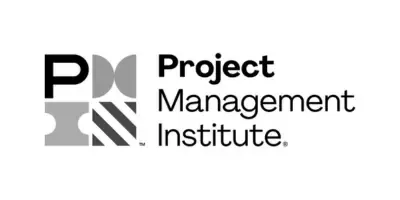Leading Through Change: Adapting Strategies for Success in Leadership Development
In the dynamic realm of leadership development, the ability to navigate and lead through change is not merely a valuable skill; it's an absolute imperative. "Leading Through Change: Adapting Strategies for Success in Leadership Development" is a mantra that encapsulates the essence of thriving in a world where the only constant is change. In this comprehensive guide, we will delve into the intricate art of adaptability in the context of leadership development , offering a roadmap for leaders to excel and inspire growth amidst ever-shifting landscapes.
Embracing Change: A Leadership Imperative
Change as the New Norm
The contemporary leadership landscape is marked by a relentless pace of change. What was once considered an occasional disruption has evolved into an integral facet of leadership development. Leaders who not only accept this new norm but also wholeheartedly embrace it gain a remarkable advantage. They view change as a conduit for evolution and an opportunity for advancement. They understand that, in this era of rapid transformation, leaders must become the champions of adaptability.
The Role of Resilience
Resilience is the bedrock of leadership in a world defined by constant change. It goes beyond mere survival; it entails the ability to bounce back from setbacks with increased vigor. Resilient leaders are not discouraged by failures; instead, they perceive them as stepping stones to success. Their unwavering positivity and determined outlook serve as beacons of hope for their teams.
Flexibility in Leadership
Today's leaders must embody flexibility in their leadership style. Flexibility allows leaders to pivot swiftly in response to evolving circumstances, ensuring that their teams remain on course even in the face of uncertainty. It's about being agile rather than rigid, adaptable rather than unyielding.
Leading Through Change: Strategies for Success in Leadership Development
Effective Communication
Clear, honest, and consistent communication is the bedrock of any successful leadership development strategy amidst change. Leaders should be skilled communicators, capable of elucidating the "why" behind change, its expected outcomes, and how it will impact the team. Effective communication fosters understanding, quells apprehensions, and rallies the collective effort behind a shared vision.
Setting Clear Goals
Leadership development during change necessitates clear and achievable goals. These goals serve as guiding stars, providing direction during tumultuous times. They equip teams with a sense of purpose, aligning their efforts toward a common objective. In an environment where change can often feel like sailing in uncharted waters, clear goals are the compass that ensures a true north.
Team Involvement
Change should not be unilateral but a collective effort. Leaders who encourage team members to actively participate in the change process witness higher commitment levels and often unearth innovative solutions. By involving the team in decision-making, leaders not only foster ownership but also enrich the change initiative with diverse perspectives.
Continuous Learning
In a world marked by rapid transformation, a culture of continuous learning is indispensable for leadership development. Leaders should nurture an environment where team members continuously acquire new skills and knowledge that align with the shifting landscape. Leading through change means perpetually evolving and staying at the forefront of new developments.
Risk Management
Change inherently carries risks. Leaders should be vigilant in identifying and mitigating potential risks to ensure a seamless transition. Effective risk management minimizes disruptions and contributes to the overall success of the change initiative.
Embracing Technology
The incorporation of technology as a tool for leadership development is pivotal in an era of change. Technology streamlines processes, enhances communication, and provides valuable data for well-informed decision-making. Leaders who effectively embrace technology position themselves ahead of the curve.
Leading by Example
Leaders who model the behaviour and attitude they expect from their teams are more likely to succeed in leading through change. By demonstrating a positive approach to change, leaders inspire and motivate others. Leading by example sets the tone for the entire organization, fostering a culture of adaptability and innovation.
FAQs: Navigating Change as a Leader in Leadership Development
Q1: How can I inspire my team during significant organizational change in leadership development?
A1: To inspire your team during change in leadership development, lead with transparency, acknowledge their concerns, and communicate a compelling vision of the future. Encourage teamwork, celebrate small wins, and continuously communicate progress to maintain motivation.
Q2: What role does emotional intelligence play in leading through change in leadership development?
A2: Emotional intelligence is a crucial element in leadership development during change. It helps leaders understand and manage their emotions and those of their team members, fostering empathy, active listening, and effective communication.
Q3: What if a change initiative faces resistance in leadership development?
A3: Resistance is common during change in leadership development. To address it, engage in open dialogue, clarify the reasons for change, and involve employees in decision-making. Resistance can sometimes provide valuable feedback for adjustments.
Q4: How do I balance the need for change with the fear of instability in leadership development?
A4: Striking a balance between change and stability is a delicate task in leadership development. Leaders should provide a clear path forward, maintain consistent practices where possible, and reassure the team that change is a step towards growth and enhancement.
Q5: What if a change doesn't yield the expected results in leadership development?
A5: If a change doesn't yield the expected results in leadership development, leaders should be open to feedback, analyze the process, and make further adjustments as necessary. Change is a dynamic process that requires continuous improvement.
Q6: How can I keep my team motivated when change becomes overwhelming in leadership development?
A6: To keep your team motivated in leadership development during overwhelming change, offer support, recognize their efforts, and communicate the benefits of change. Break the change process into manageable phases, celebrate achievements, and provide regular updates on progress.
Conclusion
"Leading Through Change: Adapting Strategies for Success in Leadership Development" is not merely a catchphrase; it's a roadmap for the leaders of today and tomorrow. In a world defined by ceaseless change, leaders who can adeptly adapt, inspire, and guide their teams through transformation will emerge as the vanguards of success. By embracing resilience, effective communication, and a relentless commitment to continuous learning, leaders can steer their organizations toward new horizons, even amidst the most profound changes. Change is not a hindrance; it's the canvas on which the masterpieces of the future are painted, and leading through it is the art that transforms potential into reality.
Interested in a free Leadership Skills Workshop with your team?
- Address instantly fixable issues that impact customer perceptions and employee morale.
- Learn and practice a habit that will raise employee performance.
- Set actions with specific and measurable steps that they'll gladly be accountable to achieve.











